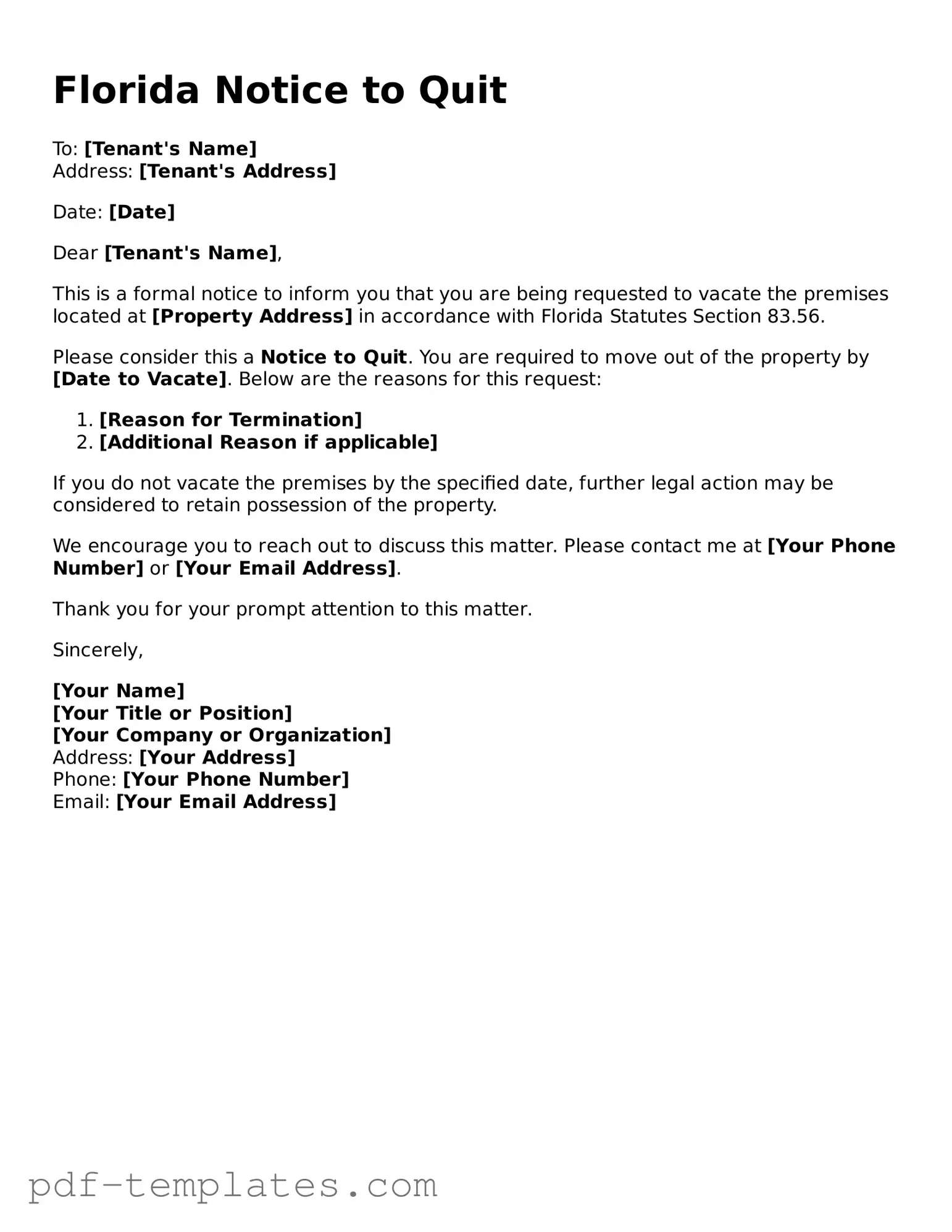The Florida Notice to Quit form is similar to the Eviction Notice, which is commonly used in many states. An Eviction Notice serves as a formal request for a tenant to vacate a rental property, typically due to non-payment of rent or violation of lease terms. Both documents outline the reasons for termination and specify a timeframe for the tenant to leave. However, while the Eviction Notice often follows a legal process initiated by the landlord, the Notice to Quit serves as an initial step in that process, signaling the landlord's intent to terminate the tenancy.
Another document that shares similarities with the Florida Notice to Quit is the Lease Termination Letter. This letter is used by either party—tenant or landlord—to formally end a rental agreement. Like the Notice to Quit, it communicates the intention to terminate the lease and provides a timeline for the other party to act. However, the Lease Termination Letter is typically used when both parties agree to end the lease, whereas the Notice to Quit is often used in situations where one party is not complying with the lease terms.
In light of the various forms that pertain to lease agreements and tenant communication, it is essential to note that understanding these documents can significantly enhance tenant preparedness. For those in California, the California Earthquake Authority form stands out as a critical application for obtaining earthquake insurance, ensuring that residents are equipped to handle potential seismic damage. This form collects pertinent information about the applicant and their property, ultimately safeguarding against the state's unique earthquake risks. To access and complete these necessary documents, you can find All California Forms readily available, providing a comprehensive resource for tenants and homeowners alike.
The 3-Day Notice to Pay Rent or Quit is also comparable to the Florida Notice to Quit. This document specifically addresses situations where a tenant has failed to pay rent. It demands that the tenant either pay the overdue rent or vacate the premises within three days. While the Notice to Quit can be more general, the 3-Day Notice is focused solely on financial obligations, making it a more targeted approach for landlords dealing with non-payment issues.
The Conditional Quit Notice is another document that resembles the Florida Notice to Quit. This notice is issued when a tenant has violated specific terms of the lease, such as having unauthorized pets or causing damage to the property. It notifies the tenant of the violation and gives them a chance to remedy the situation before facing eviction. Both notices aim to inform the tenant of their shortcomings, but the Conditional Quit Notice provides an opportunity for correction, while the Notice to Quit may not.
Lastly, the Demand for Possession is similar to the Florida Notice to Quit in that it is often used in the eviction process. This document formally demands that a tenant vacate the property, usually following a court order. While both documents serve the purpose of requesting that a tenant leave, the Demand for Possession is typically issued after legal proceedings have started, whereas the Notice to Quit is often the first step in the eviction process, allowing landlords to communicate their intentions without immediate court involvement.
